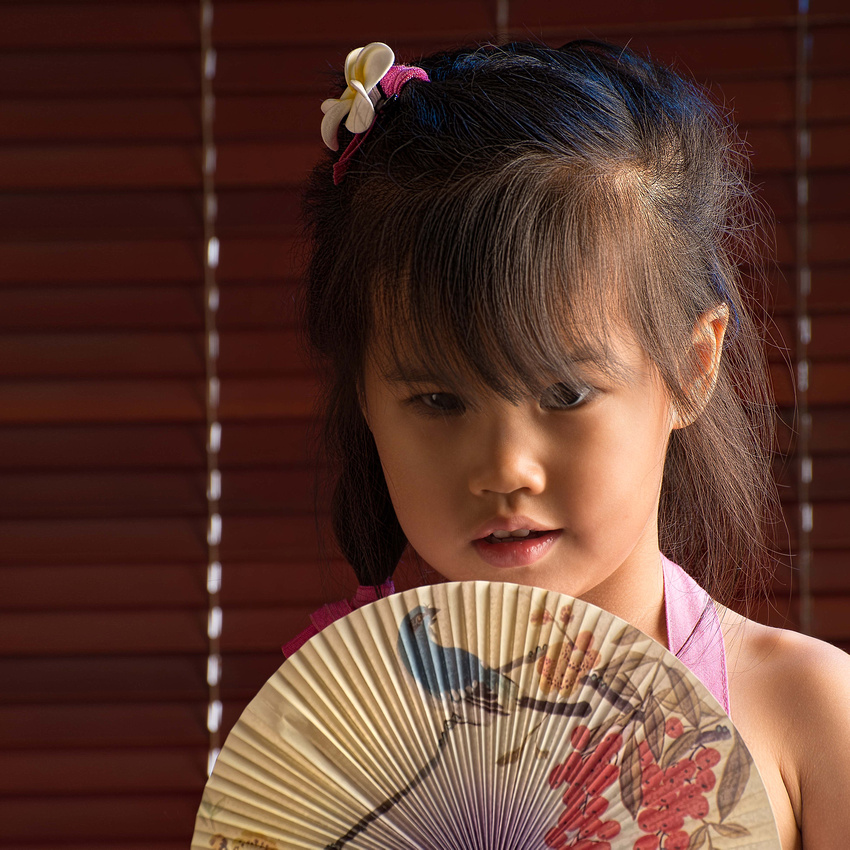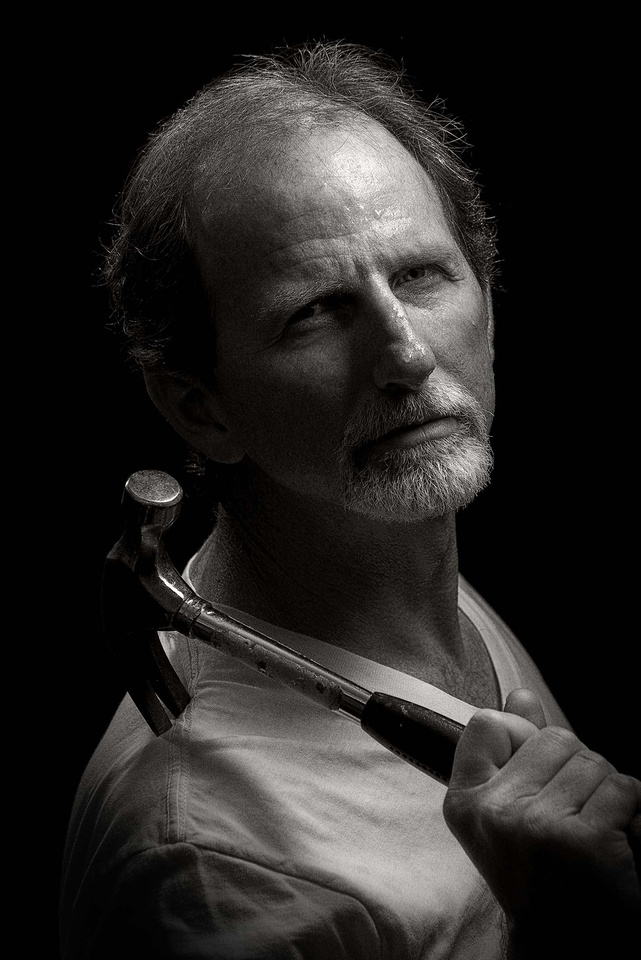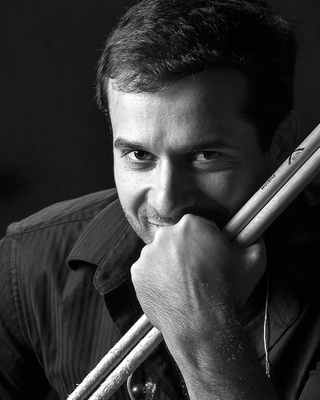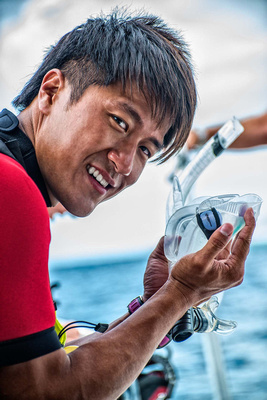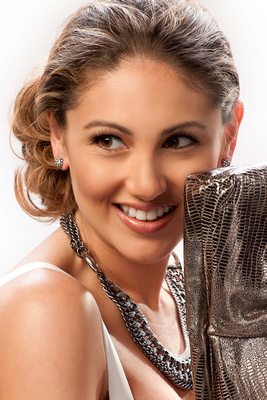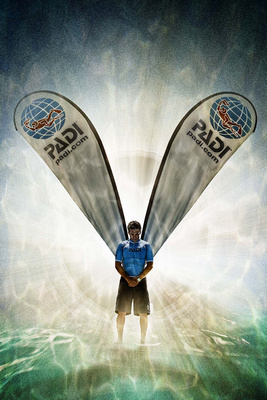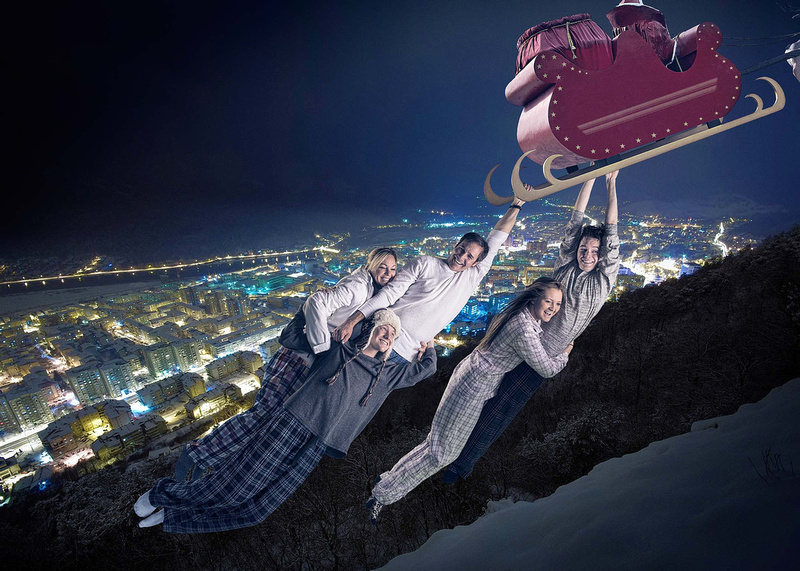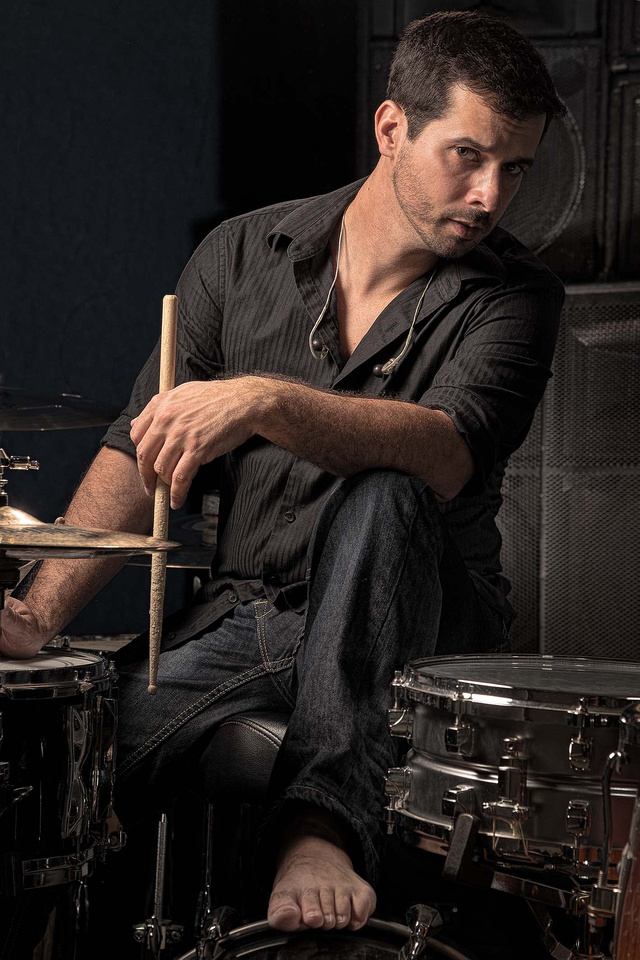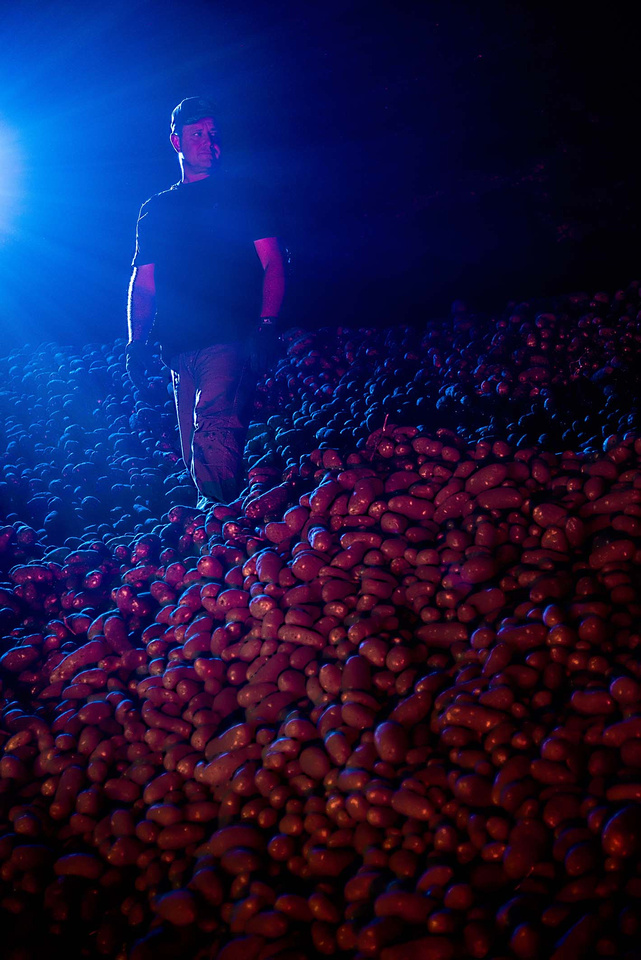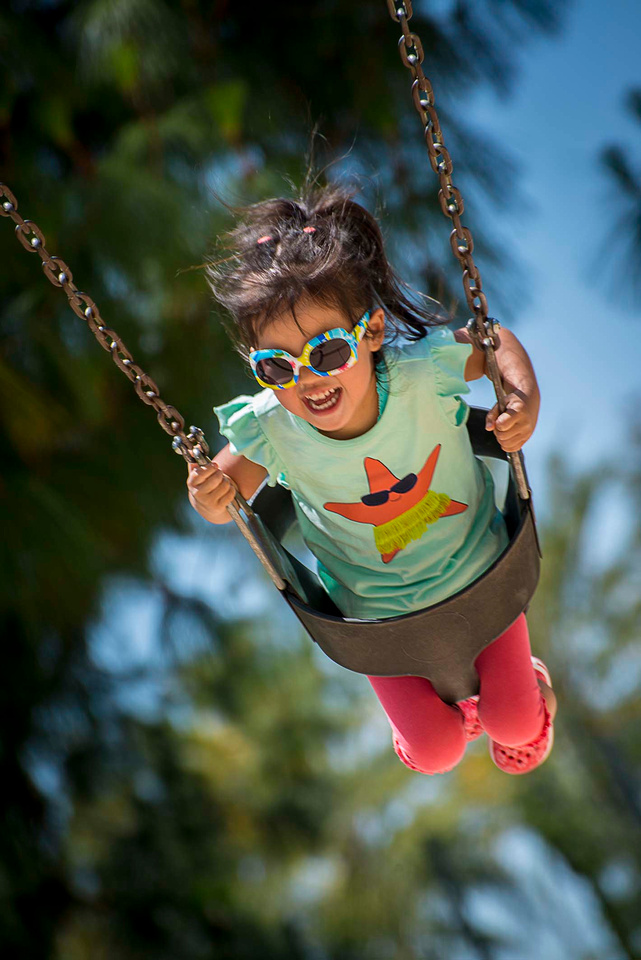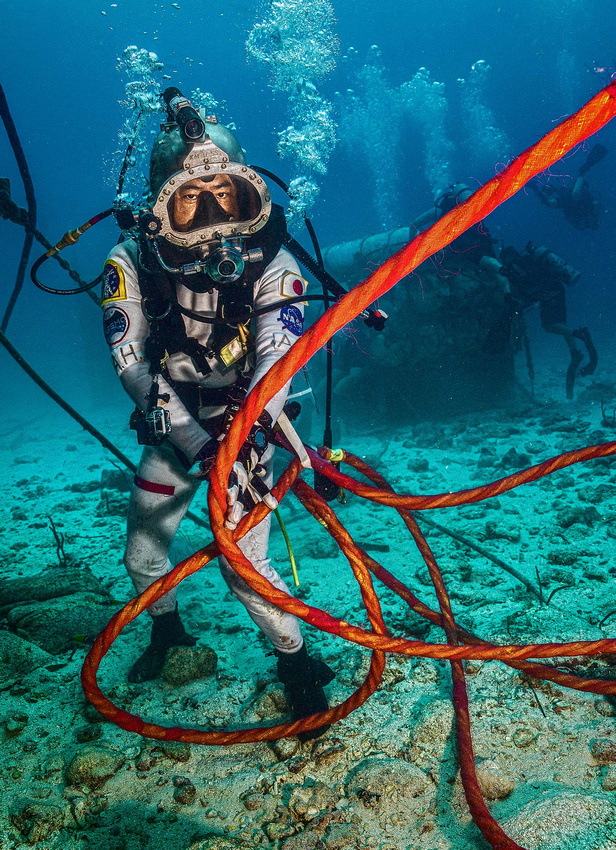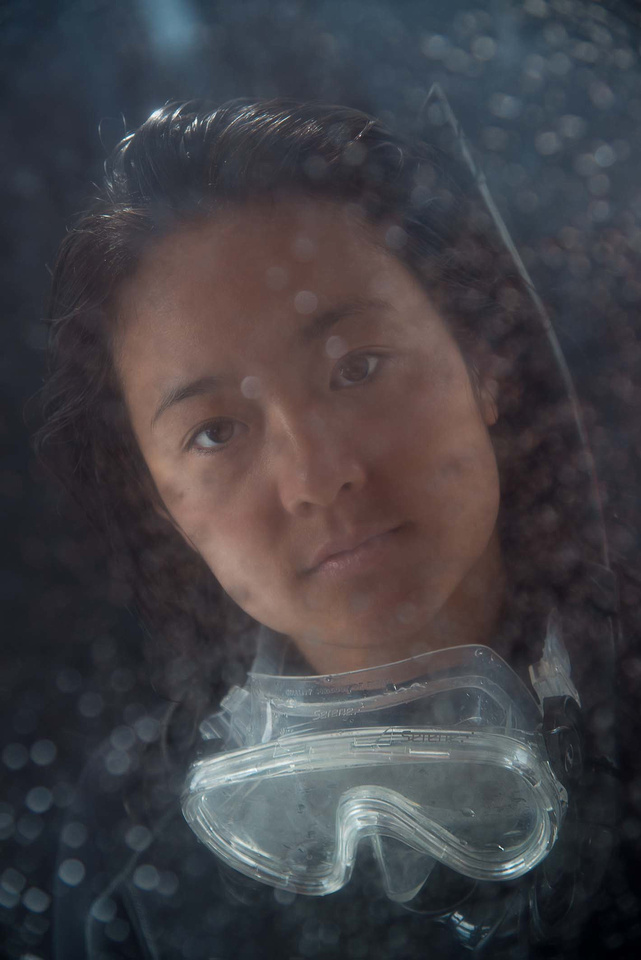|
Welcome to my online column. It's a few notes on what happens on different photo shoots and thoughts about shooting and image processing that may be useful to you if you're looking for my services as a photographic artist, or if you're a fellow shooter/image maker who works in the same areas in which I do. When All You Have Is a Hammer, You Treat Everything Like a Nail
This is as true in photography as in the garage, though for some reason, it's not as obvious to laypeople. Or even a lot of photographers.
Sometimes people remark about all the gear I bring on many of my shoots. Like the auto mechanic, I don't expect to use everything, but I want to have the right tools. Most relate to lighting because lighting makes-or-breaks the shot, yet varies more than anything else. I always plan about what I think I'll need, but sometimes clients ask for images that weren't planned ahead. Sometimes there's a cool moment I don't want to pass up. Sometimes – often – the light isn't what I expected, or it changes. Or, more commonly, all of these happen. But, no problem, because I have what I need to get the desired shots.
Often, like when I travel, I can't take my whole "toolbox." But, with good planning, what I can take covers me 99% of the time. When the remaining 1% hits, I don't waste time fussing that my Lastolite 8-in-1, or whatever, that I left in California would be perfect. I focus on what I have, apply some creativity and solve the problem without resorting to the nail treatment. As noted photographer Joe McNally said, "The most important piece of equipment in your bag is your attitude." (But, even Joe packs the lighting tools – he even helps invent them.)
This is why it amazes me when some photographers practically boast about how little equipment they have, the most common claim being that "I'm a 'natural light' photographer." Really? Would you get your car fixed by someone who says, "I'm a 10mm wrench mechanic."? Or, "I'm a hammer mechanic."? Let's be fair – some types of photography like nature, landscape and sports – appropriately don't use much lighting equipment. But, in my experience, many of the shooters who claim to be "natural light photographers" actually don't know how to light and use lighting tools. As a result, sometimes they use "natural light" when it's not what the shot calls for. All they have is a hammer, so ironically, they don't nail it but do screw it up (aren't metaphors fun?).
To be clear, I'm not dissing natural light. It's not always appropriate to have a ton of gear on a shoot, and even when I do, sometimes the only tools I need are the camera and the lens, and the lighting stuff stays boxed. And also to be clear, it's not about using gear. It's about getting the shot you want.
Look at the shot above. Depending upon the situation, I could have set it up using natural light, strobes, reflectors or a mix for the main light. Ditto for the fill and hair. Falloff to the left could come from open space or negative fill. Considering I have all of these tools at my disposal, which, you may ask, did I use?
It doesn't matter. I got the shot I wanted.
The Magic Moment: When Opportunity Meets Preparedness
No, I did not Photoshop the fish into this image. There are some shots that rely on a bit of luck, and this is one of them. But, I've noticed that skilled shooters are "lucky" a lot more often than less skilled shooters. So, maybe there's more to it than luck.
The model, Linda, and I were shooting on the Kittiwake wreck in Grand Cayman. To get the shot I wanted, Linda swam a path we established along the deck, with me shooting. For this kind of shot, it's most effective to have the model in motion, timing each capture based on body position, location and the light (not "machinegunning" – that's what amateurs do). We were just starting a second pass when I saw the fish swimming into the shot out of the corner of my eye (no small feat wearing a dive mask, BTW). I knew I would have exactly one shot to take advantage of this magic moment, and that's where discipline comes in. Don't rush, wait for it . . . . . click.
We finished the sequence, but I knew I already had the shot. A moment earlier or a moment later would have missed. If I'd just mindlessly banged off frames as fast as I could hoping I'd get it, I'd have almost certainly have had two dozen images with the magic moment falling between two of them (something I've learned the hard way). Even when shooting multiple images to get "the one," you don't mindlessly click them off by the dozens; you time each based on what's happening in the viewfinder. Today we capture more frames than we did with film, but shooting so many that you can sequence them into a movie, in most circumstances, points to a lack of skill.
The harder part in capturing magic moments, I think, is trusting that they will come. But, they will, especially if you grow them. When I was less experienced, I was a hunter trying to track down each shot and make a kill. I tried to force these moments because I had to deliver and was afraid to come home empty-handed. Today, I'm a farmer: I set the stage, set the light, and plant "seeds" with my subjects, then wait for them to grow, harvesting the magic moments that I "luck" into. I shoot fewer images than I used to, yet end up with more, better keepers.
So, while the fish swimming into the shot was pure luck, the image wasn't pure luck because we'd set the stage, set the light and planned the shot even without them. When the opportunity came, I was prepared.
Magic. Don't Confuse Image Style with Photographer Style
In photography, "style" tends to be a mushy, confusing term that can take people down the wrong path: Shooters try to be something they're not when asked to shoot "this style." Likewise, clients looking at images may pass over a photographer who might have been exactly what they're looking for because the portfolio shots or previous works "aren't the style we want."
"Style" actually means two things in photography (maybe more, but we'll say two for this point): the image's style and the photographer's style.
Image style refers to common technique: environment, lighting, angle, perspective, etc. It's not precise, but most people would agree that the first two of these three shots have the same (or at least similar) image style, and third does not:
Image style is a general look that applies regardless of who took the shot, where, etc. For example, the first two images reflect Rembrandt lighting, and this technique imparts an image look (style) that many photographers have used for decades. The third shot has an entirely different look; it has a different image style.
Photographer style is entirely different. It is that something that unifies all the works of an artist, regardless of image style. Take, for example, the works of the highly-acclaimed Annie Leibovitz. She shoots art, fashion, portrait and advertising in a myriad of image styles, yet her work is almost unmistakeable. There's something about her style that cuts across image style; it's what makes her images unique – something you will only get from her. Consider Gregory Heisler, and George Hurrell, both masters of the portrait. You'll find many different image styles in both of their works, yet there's something unmistakeable: a Heisler is a Heisler, and a Hurrell is a Hurrell. The same is true in classic art – a Monet is a Monet and a Picasso a Picasso.
Image style must change to fit the subject, or you're not doing your job as an image maker. Look at the shots below: I shoot a lot of training/scuba lifestyle images; the style I use for those is nothing like what I use for studio fashion or a portrait. And, those differ from the image style for, say, composited artistic work. Even within a genre, image style must change to fit the subject and to meet what the client needs. Shooting high fashion in a studio demands a very different approach from shooting casual fashion in the field. So, you use different tools for each of these needs. You shoot at a different pace with different lighting. You interact differently with subjects and models. You think differently because you must approach each differently.
But, across all these differences, the photographer's style doesn't change; it's the fingerprint that makes a Hurrell a Hurrell or a Leibovitz a Leibovitz. Photographer style may evolve, but one can't eliminate it or hide it. If you know my work, all six of these images are clearly my work, despite very different locations (studio, field), equipment (full studio light, run-and-gun reflectors & speedlights) and interactions (serious and methodical, quick & fun).
If you're a photographer or photographic artist, it helps to master many image styles, but your style is what makes your work singular and unique. You can't force your style into a mold, but you can help it evolve and grow by studying your craft and by shooting a lot, of course. But, don't try to shoot like Heisler or Hurrell. You can't; you just come across as a counterfeit. Learn from the masters, but shoot like you.
If you're a client who wants a particular look or feel for an image or series, don't let image style blind you to the photographer's style. That is, don't assume that because a shooter is great at a particular image style that that is the only image style the person is good at. Or, that that person can't shoot other image styles (that may be the case, but don't assume it without checking). Look at the photographer's style – the ineffable something that unites very different works from the same artist. If it works, chances are it works across many image styles. If it doesn't work for you, then you probably won't like it any better with different lighting. How They Ended Up On the South End of North-Flying Reindeer
Sometimes fun shots come together magically. Fittingly, this family Christmas card is one of those.
It started a couple weeks before the shoot with the idea that we'd do something with everyone base-jumping in parachute gear. This sounded awesome, with everyone falling at the camera (i.e., me while I shoot) and landing in foam. But, a few flaws. For one, it wasn't all that Christmassy. Second, we were having trouble getting base-jumping gear. Wayne and Karen Brown of the Ocean Adventure had generously offered to let us borrow their sky diving kit, but they were out of town and wouldn't be home in time. Then there was the small detail whether I would actually be able to get out of the way fast enough –– not just once, but the dozens of times it would take to get good images of everyone falling at me.
So, plan B was to go to an indoor skydiving facility. Flaws here were cost, plus we weren't sure we'd get permission to do the shots (we never got as far as asking though). Again, not very Christmassy. And, while I was blown away with the idea, there was a good chance I'd be blown away by the idea. So that got nixed.
Plan C was to go back to Plan A, but more Christmassy with everyone falling toward camera from out of Santa's sleigh, so no parachute kit needed, though I have it on good authority that Santa is a skydiver (which may have something to do with the reliability of reindeer-based aircraft propulsion.) So, this was the plan going into the shoot, even though we still had the can-I-get-out-of-the-way thing nagging us (well, it was nagging me).
That morning, I got up early knowing I'd need to be setting up the studio two hours ahead of the scheduled shoot time. Over coffee, I mentioned the concept to my wife, which led to some jokes about the Pixar animations, Prep and Landing (my daughter loves them). Prep and Landing shows us that Santa's sleigh launches and lands much like FA-18 Hornets coming and going from the Nimitz, and this led to jokes about what would happen if you tried to sneak aboard Santa's sleigh at launch and timed it just a hair late . . . .
Hey, that's it!
I called Ted (the dad). He liked it, too: funnier, more Christmassy, better chance of working, and added bonus, his family didn't have to change out of their pajamas. I zipped to the studio, did this set up, they arrived, we shot and a few hours in Photoshop later, everything came together like magic –- a way better creation than anything we'd imagined any time in the previous two weeks.
I guess there is a Santa Claus.
Shoeless Abe
Professional photography, at its core, is a continuous problem-solving exercise. Every shoot differs, providing something you didn't expect. That cool-and-collect attitude you see from a seasoned pro doesn't come from having seen it all. It comes from knowing that whatever comes up, you'll be able to solve it because you always have. Commissioned to shoot portraits of Soultone-sponsored drummer Abe Rodrigues of The Droppers, the challenge was that he performs barefoot. Ever heard of the baseball player Shoeless Joe Jackson? He got his nickname following a single game in which his feet were so blistered that he went to bat and ran the bases in his socks. But, shoeless isn't a one-off for Abe's sessions; it's how he usually plays. Problem is, drums hide the drummer's feet, so how do I shoot that? When he's not playing, of course. Like most good images, it started with getting the lighting dialed in so that we could let the moments happen without worrying about that. After several different shots drumming and not, Abe took a breather and leaned back, much as you see him here. Yes! But not quite there yet. We went through a few variations, and he nailed it. (Plus some others -- check them out here.) And that's the other cool thing about shooting performance artists -- they're not afraid to commit to the shot, and they know how to play to camera. It's been my privilege to shoot some talented artists over the years (magician Scott Tokar, actor/singer Thomas R. Cummings, various bands, etc.) and it's always a joy. Given the chance, I rarely turn down a chance to shoot performance artists, but I'd especially love to shoot Gwen Stefani, Ailee, or G-Dragon, if you happen to have any connections. <g>
Note: Given we're in the Christmas season, I initially thought I'd call this The Little Drummer Boy. But, Abe's not that little, nor a boy . . . . Feeding the World
Meet Kevin. He has a lot to do with the Thanksgiving meal most of us Americans will enjoy in two days. He's a Tulelake, California, farmer standing on the mashed potatoes we'll heap onto our plates next to the turkey. That's a two-story stack of potatoes – just one farm's output of one of its crops. You're seeing the tip of the tip of the tip of the iceberg. According to the American Farm Bureau Federation, only about two percent of us in the US are farmers, but it takes 15 percent of us -- 21 million people -- to process, pack and ship what they turn out. Thanks to what they do, we only have to spend about 10 percent of our disposable income on food, yet incredibly, a third of America's agricultural output gets exported. Last year, the US exported more than 30 billion metric tons in wheat alone. We raise nearly half of the world's soybeans and corn. All-in-all, every America farmer feeds 140 to 155 people (sources vary on this estimate) around the world. Fifty years ago, it was about 26. Yes, we import a lot of food, too, but we export more than we bring in. American farmers work long days (actually, they work long hours – their "days" often start and end in the dark), with an average estimated return of only about 12 to 16 cents on the dollar. That's about half the return they had 30 years ago, by the way, without adjusting for inflation. And, it takes a lot of dollars to farm today. Take for examples, which start, with the required attachments, at $100,000 but can cost twice that. American farmers produce more than ever before, and will likely have to do even more over the next 15 years as global populations rise. Even with growing demand and lower returns, though, our farmers are increasing their sustainability and green practices. Most farms conserve large wildlife areas, plant trees and other plants and increasingly implement sophisticated agricultural practices so that they need less water, fertilizer etc. per acre than a few decades ago. Farms are the main developers of alternative energies, and the primary users of some forms. It's not an easy life, but thank God they do it. Next time we sit down to dinner – especially at Thanksgiving – and say grace, perhaps we could add a word of blessing and thanks for Kevin, his family and all the other farm families who literally feed the rest of the world.
What Really Matters
This shot of my daughter's worth a million to me, but not because it's a nice photo. Certainly people relate to it, and they've given me kind words about her gleeful expression, or how it takes them back to when Daddy pushing you on a swing was one of life's greatest joys. Her delight's genuine, and you can see it. But, while it's great to create a good image, there are many things that are more important.
What makes this image special is that in it, we see changed lives – my daughter's, my wife's and mine. Since there are other pictures of her and of me on this site, you may realize that we adopted her. I can't imagine what it's like for anyone to grow up without loving parents, but it makes me wonder whether she would have had moments like these. On the other hand, I now know what my wife and I would have missed; thinking what might not have been makes me weep.
Too many children grow up without families; there are about 153 million orphans in the world who have lost one or both parents (and one is too many). But, considering there are about 1.4 billion families (households) if only about 1 in 9 adopted one child, we could close every orphanage. Not every household can do so, but others would (and do) adopt two or more. And, of the 153 million, many still have a parent and a viable family. My point is that this should be a solvable problem.
To be direct, what about you? If you're thinking about enlarging your family, give it some serious thought. For those who may feel the same way, I wasn't sure I wanted to adopt. If I'm honest, I was basically dragged into it. But my fears, concerns, worries and hesitation vanished the instant I held my little girl for the first time, and now I thank God that He didn't let me off the hook on this one. When you become an adoptive parent, you give a lot, but you get a lot more than you give. For every smile we've put on our little girl's face, she's put a hundred on ours. I think it's one of God's ways of teaching us what's really important.
Twenty Thousand Dollars Under the Sea
Background: In my November 2012 blog post, I wrote that the Aquarius undersea habitat -- the ocean equivalent of the International Space Station -- was about to close due to lack of funding. With it, the NASA Extreme Environments Mission Operations (NEEMO) programs were in peril, potentially ending more than a decade of researching human spaceflight under the sea. Fortunately, as shown in an update, at the last minute Florida International University took up the reins of funding and managing this imporant national resource.
After nearly coming to an end in 2012, two years later the NEEMO project has come back strong, with two missions, NEEMOs 18 and 19, in 2014. At this writing, NEEMO 18 just concluded (very successfully), with NEEMO 19 about three weeks away. Having been a contractor with the NEEMO project since its inception in 2001, over the years I've "worn many hats," including, at times, photographer. On NEEMO 18 shooting wasn't my primary role (I was primarily a support diver); that duty fell to accomplished imager Mark Widick (check out his amazing space shuttle launch shots!), who was sporting a Hasselblad H3D in an underwater housing.
If you're not a photographer, you may not know that Hasselblad is considered the highest quality professional camera available. Hasselblad makes each with a unique combination of mass production and hand crafting, with a large sensor and the world's finest lenses. Its current top end model (the H5D-60) is a 60 megapixel camera (about twice the resolution of the current highest DSLR sensor at 36 megapixels), which continues a 50+ year trend. During that span, Hasselblad has been the tool of choice in the fashion industry and other high-end imaging, including being the camera that went to the moon. No one argues that Hasselblad is the best of the best for high end, commercial imaging.
But, it's a high-ticket item -- an order of magnitude more costly than the finest Nikon and Canon DSLRs (you want the best, you have to invest), so while I shot Hasselblad a lot during the film era, until NEEMO 18 I'd never had a chance to shoot the new digitals. They were out of reach for me financially. Mark could see the longing (i.e., envy, lust, jealousy) on my face and, being a kind and merciful person, graciously handed his Hassy to me during two dives in which I was, at least officially, just his dive buddy. While I can hardly say I shot it enough to get to know it well, I immediately fell in love -- you have to shoot to understand it, but just feels right. With it, I captured several images I like, including this one of NEEMO 18 mission commander astronaut Akihiko Hoshide of the Japan Aerospace Exploration Agency. For this shot, I was under the Aquarius habitat (it's on a frame about 20 feet off the bottom) at the end of a simulated EVA (Extra Vehicular Activity, a.k.a. "space walk") as he was securing his life support umbilical. He turned from his task for just a beat and looked my way, giving a shot that connects you with him.
After one of our many dives during the mission, someone helped Mark by taking his camera system from him as he came out of the water. "Careful with that," I cautioned, "That's $20,000 under the sea." I wish I created this little play on words, but actually pioneer underwater photographer Jerry Greenberg did. He published an image with that title in the early 1960s, showing all the equipment he used as an early pro underwater photographer -- multiple underwater camera systems, scuba gear, several scuba cylinders -- even a boat -- all of which the caption said came to a bit more than $20K.
That says something about inflation over the last 60+ years, to be sure, but even so, I don't think he had a Hassy. He'd have loved it if he did.
Finding Your Muse
Every artist needs inspiration. What we create comes from a vision within us (albeit, often augmented and improved by the team who we work with as it comes forth), but something needs to inspire that vision. It may another artist's work, a phrase, a random thought, a dream -- but it has to be something. Or, someone, a muse –- an inspiring model, actor or collaborator or who pulls new, fresh creative visions out of us. It's magical and wonderful when you find yourself in a muse-artist relationship.
The muse-artist relationship is not monogamous, and it can be momentary or enduring. Fashion/portrait photographer Richard Avedon was a muse-magnet extraordinaire and illustrates this. Some of his most famous images feature Brook Shields, Judy Garland, Marilyn Monroe, Dovima, Stephanie Seymour, Brigitte Bardot, and Audrey Hepburn, to name only a few. Avedon photographed most of these a few times at most, yet his work exhibits the inspiration he drew from them. Hepburn, however, modeled for him many times over both their careers; together they created many of the images we think of when we think of Audrey Hepburn. The Avedon-Hepburn tie has become almost the stereotype for muse-artist relationships.
You can't decide to be someone's muse, and you can't decide someone will be your's. It's also not romantic. While it can be, that's not it. In my experience, there's a sense akin to falling in love, but it's at most an illusory crush that fades when we stop shooting. Then we're back to being friends/acquaintances. I can't explain what makes someone your muse, but you know it when it happens.
During a shoot last week, I found a muse, actor Charlie Seibold, and this is one shot that, at least in my eyes, shows it. We were shooting on a dive boat, and this shot through a splashed window was a magic setup in which everything came together way easier than it should. She gave me several looks that work, but I love her expression in this frame. It says she's strong, confident and at peace (which is probably why she's also a skilled free diver).
Will she be a my muse again? It doesn't always work that way. But, sometimes it does. We'll see.
|
